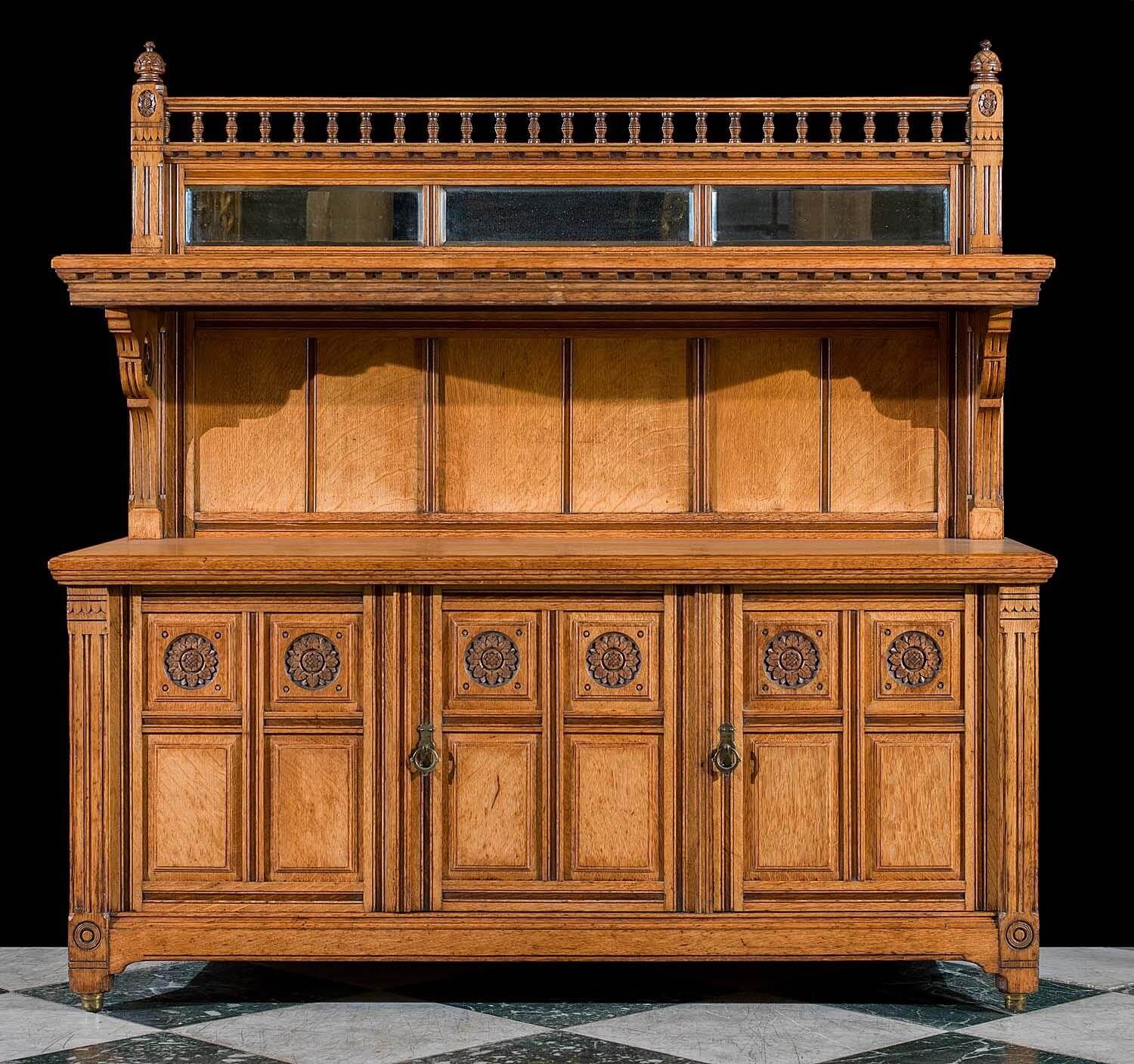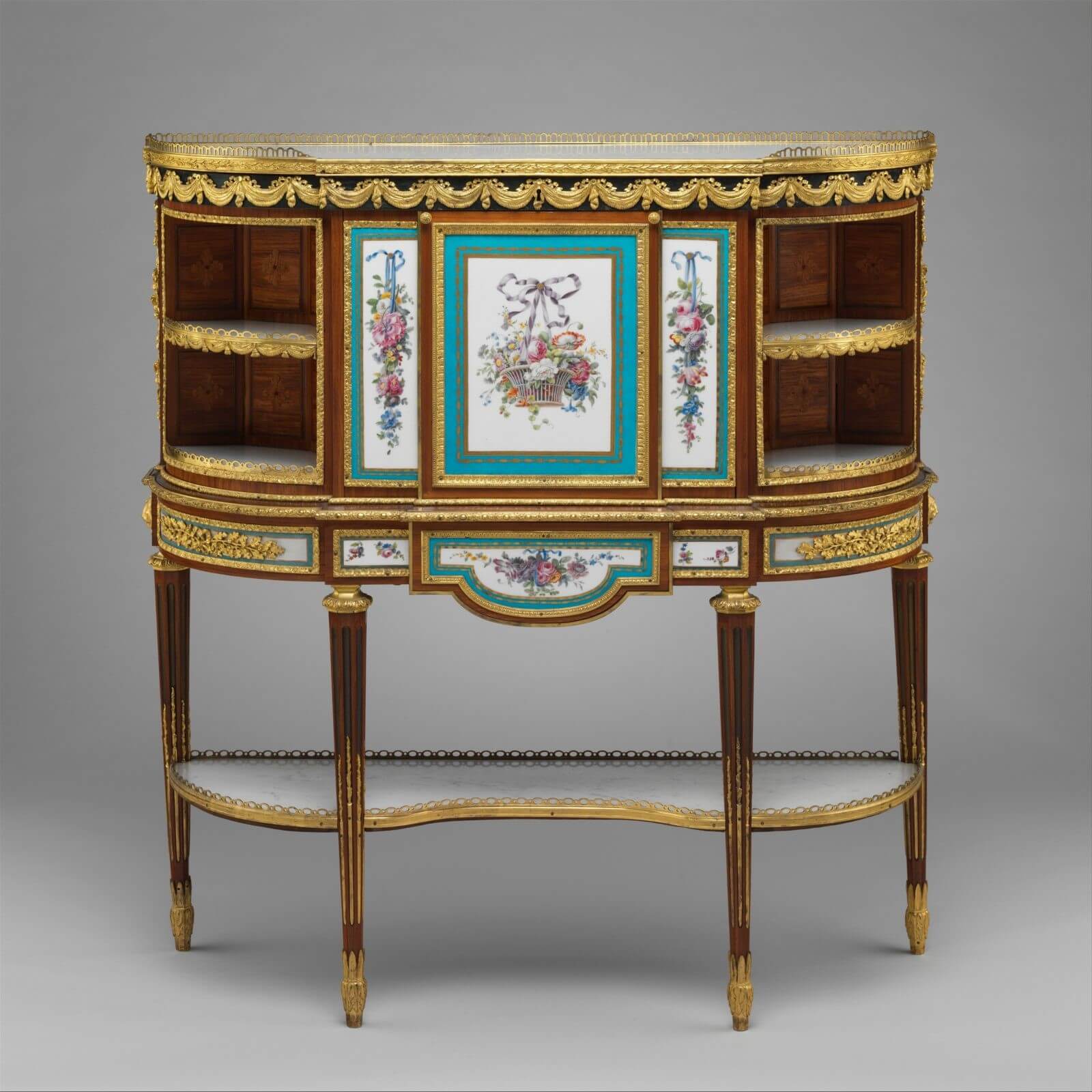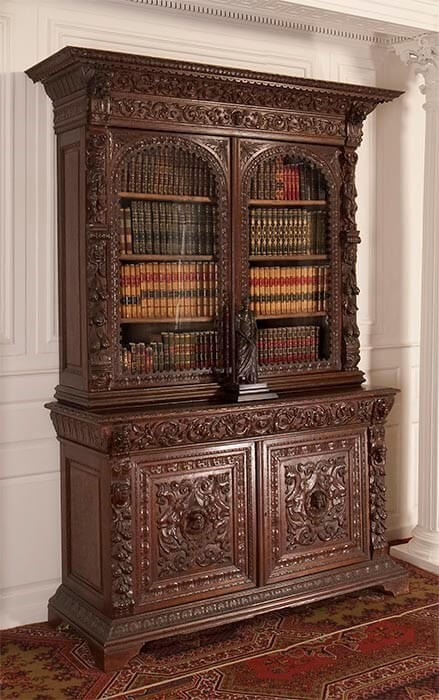Aside from being visually stunning, the ability of antique furniture to make a statement is often part of its attraction. Vintage pieces can also have practical uses, with hidden storage and secret compartments adding to their appeal.
From the late 16th Century and into the 17th Century, Italian cabinet makers popularised this sort of multi-purpose furniture, which reached English and American makers by the 18th Century.
Part of the appeal of hidden storage in antique furniture is its thrilling use in fiction as a concealer of truth and a keeper of secrets. How many times have you seen a secret compartment housing a classified document or a love confession in a book or on television? If you bought antique furniture now could you discover a similar hidden storage secret?

Nowadays, we often rely on banks or safety deposit boxes to secure our money or private possessions, but furniture before the turn of the 19th Century would be built with a secret compartment in a piece of furniture and drawers ideal for stowing away items that might have been targeted by petty thieves or prying eyes.
Finding a piece of furniture with a hidden compartment can often be part of the joy of antique hunting. If you have a small living space or like to live a clutter-free life, hidden compartments in antique furniture can be useful for storing those hard to place items (read our Marie Kondo article for more inspiration on how your antique furniture can provide the perfect storage solution).
Antique desks and secretaries most commonly have inbuilt secret compartments, but you may discover other pieces of antique furniture have carefully considered secret compartments as well. Whether it’s a hidden safe or panels, false bottoms or secret pigeonholes, there’s lots to discover when it comes to hidden storage in antique furniture.
The Secretaire
The secretaire, or secretary bookcase, was first introduced in the early 18th century and was most commonly used as a piece of writing furniture. They not only proved practical but also acted as a grand statement and focal point indicative of the homeowner’s wealth.

Aside from this, a secretaire was also popular for its secret compartments - ideal for holding money, jewels and private documents. The pigeon holes and drawers at the front of the secretaire often also included hidden compartments at the back, which were purposefully made invisible to the eye. This made it ideal for holding personal possessions that its owner wanted to keep locked away.
In other secretaires, the central cabinet could be removed to reveal more secret drawers. If you’ve recently invested in an antique secretaire, you might want to use this antique storage system for any trinkets or heirlooms that you don’t necessarily have a day to day use for but wish to keep somewhere safe.
You may occasionally find access to a hidden compartment with the use of a key, which can also unlock several other compartments.
The only hard part can be finding the hidden compartment in the first place! Examining the grooves and surfaces of the front cabinet with your fingertips can help. This way, you may be able to locate a hidden spring which will then allow you to access the central interior
Victorian bookcase
A Victorian bookcase isn’t just a showstopper in a hallway - it can often have a hidden compartment too. This multi-functional purpose can add to its value and charm.
Some Victorian bookcases have in-built books which were originally used to hide secret compartments and drawers and occasionally even a Gentleman’s bar. Today, this could still be used as a modern drinks counter suitable for a nightcap at the end of a dinner party.
You may find hidden spaces in the form of a built-in safe too, which once upon a time would have stored important documents and money. Today, this could be used to store precious jewellery or important banking documents that you would rather not leave lying around the house.
A sideboard
It can be fun trying to locate the hidden compartments in antique furniture, and part of your journey with any new piece might involve exploring and understanding its original functionality.
An antique sideboard may have secret drawers which can today be used for cutlery or other kitchen items, and using vintage furniture to store utensils can be an added attraction. Alternatively, you might find the accessible drawers have a false back with additional storage behind, which at the time of origin would have been perfect for storing small pieces of silver or gold.

Victorian bookcase
After desks and cabinets, you may find the occasional antique chest to be a treasure trove for hidden storage. Vintage chests, which you may find useful for storing towels or bed linen, may have a false bottom which can be removed to reveal a further hidden compartment. German cabinet makers would often paint the woodwork to help further conceal the moveable ends and hidden compartments.
Nowadays, you might find this the perfect compartment to store jewellery, keepsakes or photographs.
Coffee table or nightstand
A vintage coffee table or nightstand might have a hidden drawer or false bottom underneath, perfect for storing paperwork, newspapers or magazines, which will help keep your home neat and tidy at all times.
Thinking outside the box: hidden storage in antique furniture
While some pieces of antique furniture can have hidden storage, there are other ways to use antique furniture to create space in your home. If you are short on storage, a Victorian iron bed is usually much higher than a modern bed, meaning more boxes can be stored underneath.
An antique bureau is also ideal for storing away clutter or trinkets at night, and can be unfolded to be used as a conventional and practical desk space or a dressing table in the day
Hidden storage in antique furniture is just one of the many charms it holds. Next time you’re at an antique fair and sizing up a piece of antique furniture with storage capabilities, consider what might be hidden underneath and see if you uncover any secrets!